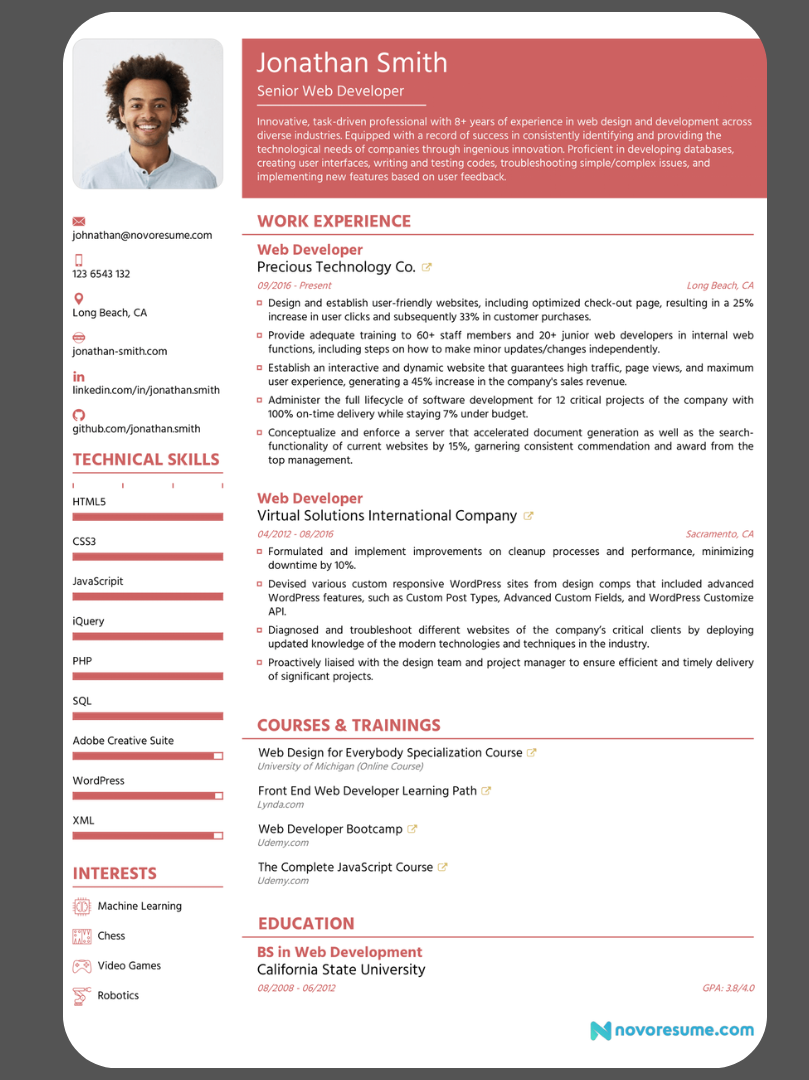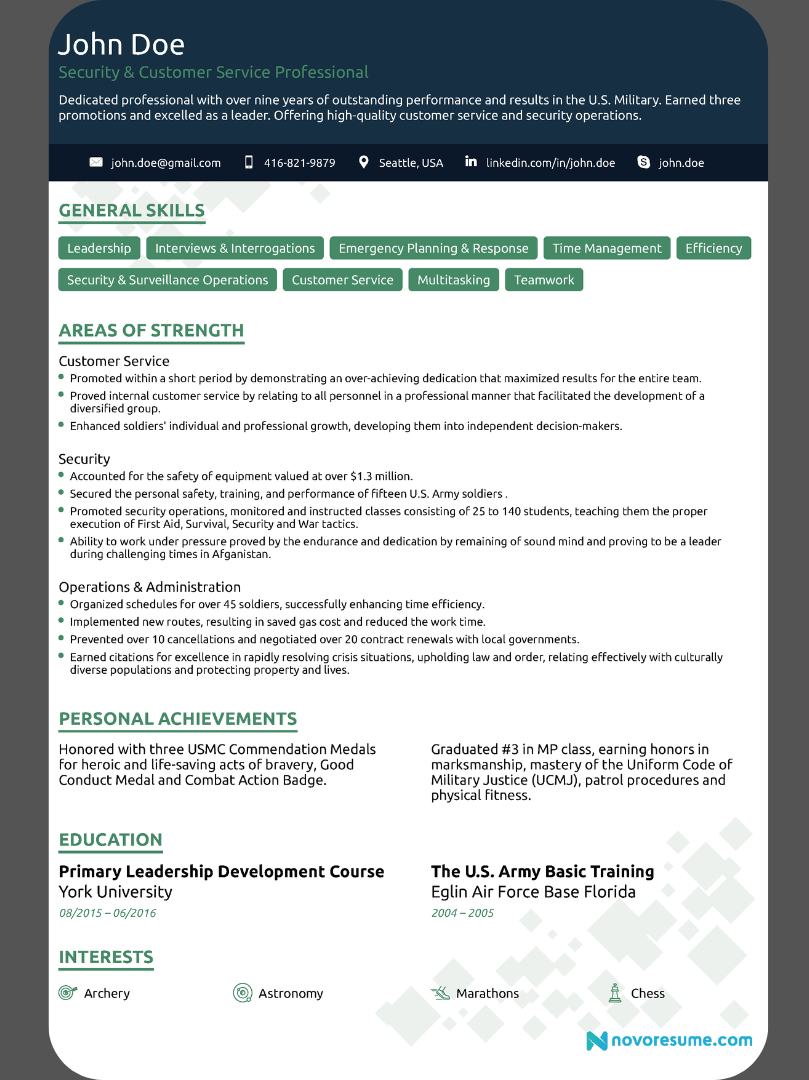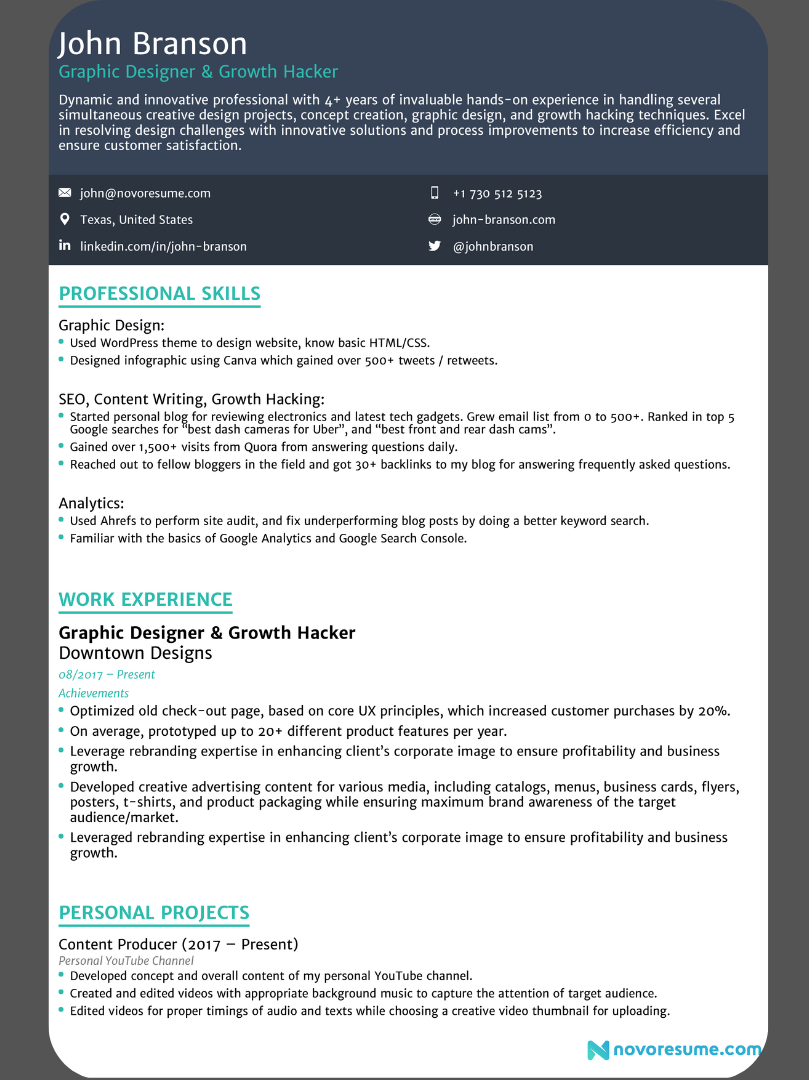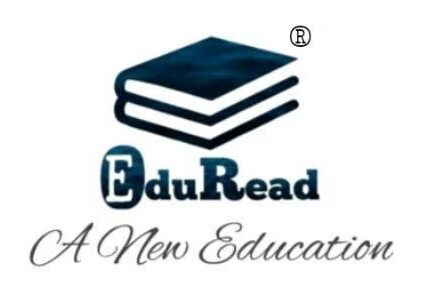Content:
- 3 – Resume Format
- Resume Format Pros and Cons
- How to choose a Resume Format
- FAQ
- Important tips
3 – Resume Formats
- Reverse-chronological – This one’s the most common and practical resume format. A reverse-chronological resume lists your work experiences and skills in reverse-chronological order.
- Functional – The functional resume is also known as the skills-based resume. This format differs from the other two because it focuses more on your skills than your work experience.
- Combination (or, hybrid) – As you probably already guessed, this one’s a combination of the other two formats. It focuses on both skills and experiences.
Reverse-Chronological Format
And here’s what you’d include in a reverse-chronological resume:
- Contact Information – Your name, phone number, location, and email address. You can sometimes include helpful links, such as a LinkedIn or GitHub profile.
- Resume Summary or Objective – A brief 2-4 sentence summary of your work experience, or your objective for applying for a given position.
- Professional Title – Your title. This should mirror the exact position you’re applying for.
- Work Experience – Your work experience in reverse-chronological order. When possible, talk about achievements over responsibilities.
- Skills Section – Skills relevant to the position you’re applying for.
- Education – Your educational history. Pro tip – if you have a B.A., feel free to skip your high school education.
- Optional Sections – Sections like volunteering, projects, portfolio, hobbies, etc. While they’re not a game-changer, they can help fill up some space on your resume.

What should you include in the Functional Resume Format?
- Contact Information
- Resume Summary or Objective
- Professional Title
- Skills Summary
- Additional Skills
- Work Experience
- Education
What is the difference between Reverse-Chronological and Functional resume formats?
The main difference from a reverse-chronological resume is that the focus of the functional resume is the Skill Summary (or Areas of Strengths in the example above) section.

What to include in a combination resume?
- Contact Information
- Skill Summary
- Additional Skills
- Work Experience
- Education

Resume Format FAQ
1. What’s the best resume format?
The best resume format is, hands-down, the reverse-chronological format.
Here’s why:
- It’s very easy to read and skim.
- Recruiters and hiring managers are familiar with this format, as most people use it.
- It’s the most popular resume format in 2022.
- Applicant tracking systems can read a reverse-chronological resume with ease.
2. Which resume format is best for students?
Again, the answer is reverse-chronological.
While a functional resume can help you emphasize your skills more than work experience, it comes with 2 serious problems:
- Recruiters aren’t familiar with it, and they might think you’re trying to hide the fact that you don’t have work experience.
- Applicant tracking systems have trouble reading this resume format.
Important Points:
- Keep your resume short and direct.
- Create an original resume template.
- Highlight relevant skills and experiences.
- Demonstrate results with numbers and metrics.
- Craft a career snapshot.
- Optimize your text.
- Think beyond your job duties.
- Use the right language to stand out.
- List your social media profiles.
- Check for errors.

